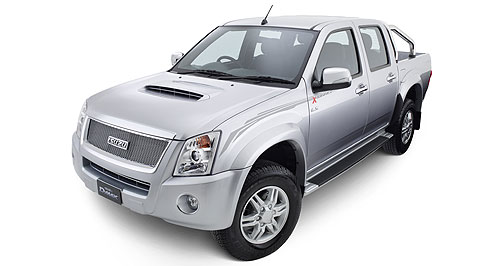News - Isuzu - D-MaxD-Max supply turns to tiersParts dramas: Thai production on next-gen Isuzu D-Max has stalled due to the choas surrounding Japanese suppliers following the March tsunami (current D-Max pictured). Isuzu admits its new model has been delayed due to supplier problems18 Apr 2011 By PHILIP LORD ISUZU Ute Australia managing director Hitashi Kono admitted this week that Thai production of the forthcoming D-Max ute has stalled due to parts shortages from second- and third-tier suppliers in Japan. The next-generation D-Max is assembled primarily with Thai components, but some parts are sourced from small suppliers in Japan’s north-east whose operations were crippled by the March 11 earthquake and tsunami. Mr Kono said that just prior to the Japanese disaster his company was readying marketing material for the new D-Max, whose key attributes will include a new diesel engine and a four- or five-star NCAP safety rating. “We were preparing for the new model, pictures for brochures … and I was about to show the dealers … but we needed to suspend this activity for a couple months until we see when the situation comes back,” he said. Mr Kono would not speculate on arrival timing for the D-Max given the uncertainty over suppliers, but the Isuzu ute is now expected to arrive here ahead of its shared-platform sibling – the new Holden Colorado – in early 2012.  Left: Next-gen Chevrolet Colorado. Left: Next-gen Chevrolet Colorado.General Motors gave us a glimpse of the next Holden Colorado in the form of a Chevrolet version shown last month at the Bangkok motor show clothed in sheetmetal that is unique to the GM products. Mr Kono described the parts supply issue as an industry-wide problem that took the car-makers by surprise. “Everyone checked the tier-one suppliers, but no-one realised how important their tier-two and tier-three suppliers were,” he said. “Some of these companies have nearly 100 per cent market share. For example, the satellite-navigation system used in many Japanese cars, they didn’t realise that one component supplier has almost 100 per cent market share.” Isuzu’s supply issues have caused a knock-on effect locally, with stocks of some D-Max model variants, such as the top-spec LS-U, beginning to run low. Meanwhile, the company is looking at the potential to expand its local range once the supplier problems have been resolved. Isuzu’s Thai factory also produces the Isuzu MU-7, a seven-seat SUV based on the D-Max that will be replaced by an all-new model. Mr Kono said that he was exploring the MU-7’s potential to join the D-Max locally, adding that the company’s local name – Isuzu Ute Australia – will not confuse potential SUV buyers but only reinforce a local flavour. “We want to be very Aussie,” said Mr Kono. Meanwhile, the Isuzu D-Max ute, a model that went into production in 2002, has celebrated 50,000 sales since arriving here in October 2008. On introduction, the D-Max attracted mainly private buyers, but fleet sales have increased, reducing the private sales mix from 80 per cent to 50 per cent.  Read more |
Click to shareIsuzu articlesD-Max pricing
Motor industry news |

















Facebook Twitter Instagram